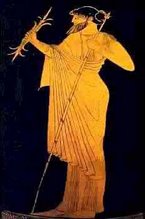
For readers who do not have a photo-editing program I highly recommend VicMan Pro Editor. I have tried it and I am very impressed with the easy to use functions. The following information on VicMan is from Soft32.com.
Free, customizable, and easy-to-use are the words that best describe this program. When I first saw the program, I couldn't believe that it was free. Therefore, I started searching for hidden options or disabled features. I couldn't find any, thus the only thing I can do is congratulate the publisher. VCW VicMan's Photo Editor supports opening many types of images. The saving formats include JPG, BMP, PNG, TGA, TIF, and PCX. I guess this is more than enough for non-professional software. The program also supports the application of visual effects to images. These effects are organized into categories for easier access. Most of them have a preview panel, which allow you to see how the image would look, if you apply the filter. By using a couple of tools, which include a brush, a pencil, an eraser, and a fill tool, you can also draw on the picture. You can use this software to create color gradients on your pictures or add text. The downside is that you can't resize the text after you add it to the image. Pluses: This program includes a magic wand tool, which can select a region of the image that contains same-color pixels. Another good feature is its ability to obtain images directly from a scanner.
Click on the following and you will find a free download Pro: http://tinyurl.com/6gxi Please let me know what you think. You will see a photo above where I played with some of the art functions and enjoyed very much. Oh, see if you can find the “errors” on the coin. God Bless.. Jerry..
Free, customizable, and easy-to-use are the words that best describe this program. When I first saw the program, I couldn't believe that it was free. Therefore, I started searching for hidden options or disabled features. I couldn't find any, thus the only thing I can do is congratulate the publisher. VCW VicMan's Photo Editor supports opening many types of images. The saving formats include JPG, BMP, PNG, TGA, TIF, and PCX. I guess this is more than enough for non-professional software. The program also supports the application of visual effects to images. These effects are organized into categories for easier access. Most of them have a preview panel, which allow you to see how the image would look, if you apply the filter. By using a couple of tools, which include a brush, a pencil, an eraser, and a fill tool, you can also draw on the picture. You can use this software to create color gradients on your pictures or add text. The downside is that you can't resize the text after you add it to the image. Pluses: This program includes a magic wand tool, which can select a region of the image that contains same-color pixels. Another good feature is its ability to obtain images directly from a scanner.
Click on the following and you will find a free download Pro: http://tinyurl.com/6gxi Please let me know what you think. You will see a photo above where I played with some of the art functions and enjoyed very much. Oh, see if you can find the “errors” on the coin. God Bless.. Jerry..













